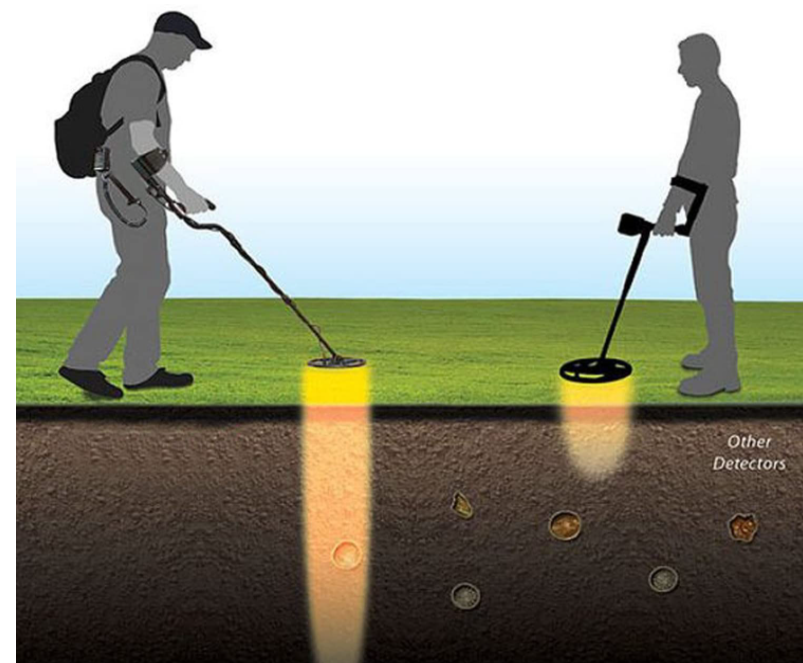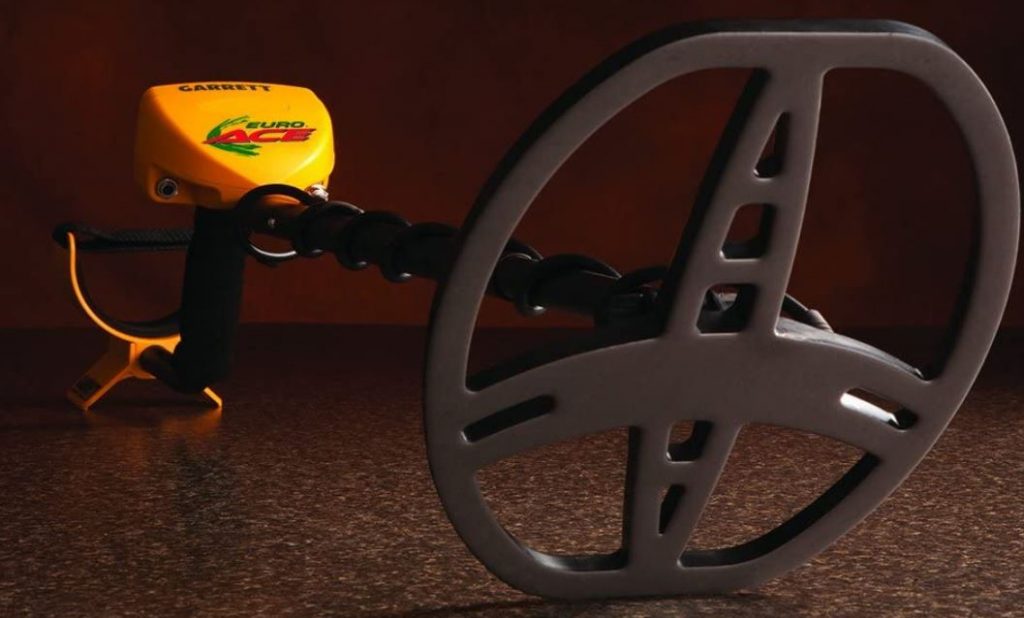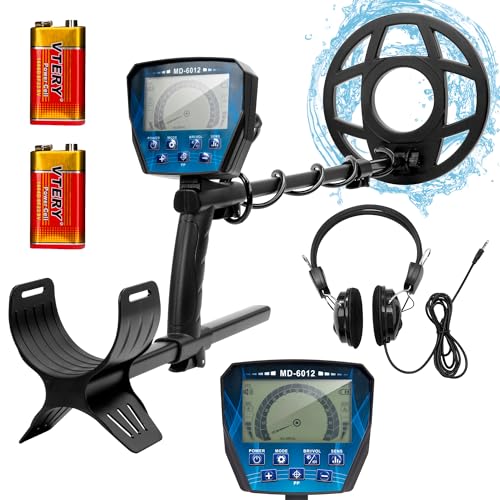
When you’re shopping for a great metal detector, one of the first questions you need to ask yourself is, how deep can a metal detector detect? Indeed, the further down you can search for old relics, the more likely you are to find something unusual and spectacular.
If you research metal detectors, you’ll notice that you can find out how deep they can search by reading the product description, but how deep can metal detectors really go? Two inches? Sixteen inches? Each detector offers a different ability to search down into the ground, and it’s good to have an idea of this number before you decide on a metal detector to buy.
What Affects the Ability to View Deeply Embedded Objects when Metal Detecting?
How Deep Can a Metal Detector Detect? Many people think it’s the detector itself that determines how deep you can search, but that is only part of the equation. What matters perhaps more than anything else is the type of soil you’re working with. Some soils simply allow you to see further down than others. That being said, here are five things that directly affect how deep your metal detector is able to detect.
- The size of the item. Naturally, larger items are easier to view even if they’re buried deep in the ground.
- The metal composition of the item. Silver, brass, and copper are easier to detect because they have higher electrical conductivity than other types of metal. Stainless steel, on the other hand, has low electrical conductivity and is usually more difficult to detect.
- The sensitivity settings of the detector itself. If you have your metal detector set at a good level, you’ll be able to detect all objects a lot easier.
- How close the target is to other objects. If the object is close to other items that are much larger in size, it will be much easier to see.
- The discrimination setting on your detector. Your detector must be set on the right setting or you simply won’t be able to find as many objects.
As a general rule, larger objects can usually be seen 14 to 16 inches below the ground, provided your detector settings are right. Of course, this is a general average because there are several factors that directly influence how deep your metal detector can locate objects.
Look at the Coil of Your Metal Detector
Among other things, the size of your coil makes a difference in how well you see the objects underneath the soil, and it is also affected by the size of the object. It’s easy to remember which size coil to get because it corresponds to the size of the object.

What this means is that the smaller the object you’re looking for, the smaller the coil should be. Small coils offer yet another advantage – they are lighter and therefore easier to control, so smaller items, in effect, are usually much easier to find when you use a smaller coil.
Having said this, it’s also best if you check with the manufacturer of the metal detector you own because different detectors will make different recommendations regarding the relationship between the sensitivity of the detector and the depth it can detect. There has to be the right balance between these two things to get the right results.
A Lot of Options Are Available
If you’re interested in detecting objects that are very deep, you’ll have to find a metal detector that promises to do just that. For example, the Bounty Hunter BHJS Junior can detect large objects that are three feet deep. Even with coins and other small objects, this particular detector can detect five inches under the ground, so the items don’t have to be directly under the surface to be detected. You’ll be happier with your metal detector once you decide whether you are going to be searching for large items or small items, and exactly how deep you want to search beneath the ground.
In case you’re wondering, how deep can a metal detector detect and do metal detectors that can detect deeper in the ground cost more money, the answer is usually “yes,” and you can indeed expect to pay more for these types of detectors. But if you shop around, you’re very likely to get a great price regardless of what you were looking for in the first place.
Another metal detector, the Garrett Ace 300, is great when you’re looking for small items such as coins because it can detect eight inches or more under the ground, and it also has a total of eight sensitivity settings that make finding smaller objects a lot easier. With this one, you don’t need a separate pinpointer because it comes with its own, saving you money for a separate pin-pointer.
You can check out the latest prices on the Bounty Hunter BHJS Junior and the Garrett Ace 300 over on Amazon by clicking on the link, neither of them has an unreasonable price tag.
The Soil Always Makes a Difference
The soil type will make a difference in how deep can a metal detector detect as well, and it has the following effects:
● Mineralized soil, which also has metallic particles, can produce a magnetic response when you’re using a metal detector but causes a loss of depth. To counteract this, just look for a metal detector that is specially made for mineralized soil.
● Wet soil increases the conductivity of the objects and therefore makes them easier to see. At the same time, you may not be able to see as deep under the ground with wet or damp soil. Moist ground, however, can make it easier to detect objects, but if you’re using a metal detector when it’s raining, make sure it is a waterproof detector (most of them are).
The frequency of the metal detector also makes a difference in how much success you have in the end. Metal detectors that offer higher frequencies are better at finding smaller objects, while low-frequency metal detectors are better at detecting at greater depths.
If it sounds like the average metal detector is filled with bells and whistles that are difficult to learn, not to worry. The average detector only has a few settings, and for the most part, the settings are very simple to learn to use.
Final Thoughts
Metal detectors offer a wide range of depth possibilities, and how deep can a metal detector detect is influenced by a number of factors. If you’re going to be detecting certain objects or in certain soil conditions, you can find a metal detector such as the XP Deus II to suit those needs.
The important thing to remember when considering how deep can a metal detector detect is that metal detectors vary greatly in their ability to find certain objects, so the more specific you are about what you are searching for, the more likely you’ll be able to find a detector that does the job efficiently once you get outside and start using it.
Again, once you determine what you intend to look for and what type of soil conditions are in the area where you’ll be looking, it is easier to find the right metal detector. If you do some research online and check the product descriptions on each detector, you’ll learn most of what you need to know to get the right one. It isn’t difficult or complicated because most brands list everything on the package that you need to know.
If you’re not planning to find anything too complicated because you’re a beginner at this, you might as well save yourself some money and get a very basic metal detector that isn’t that expensive.














